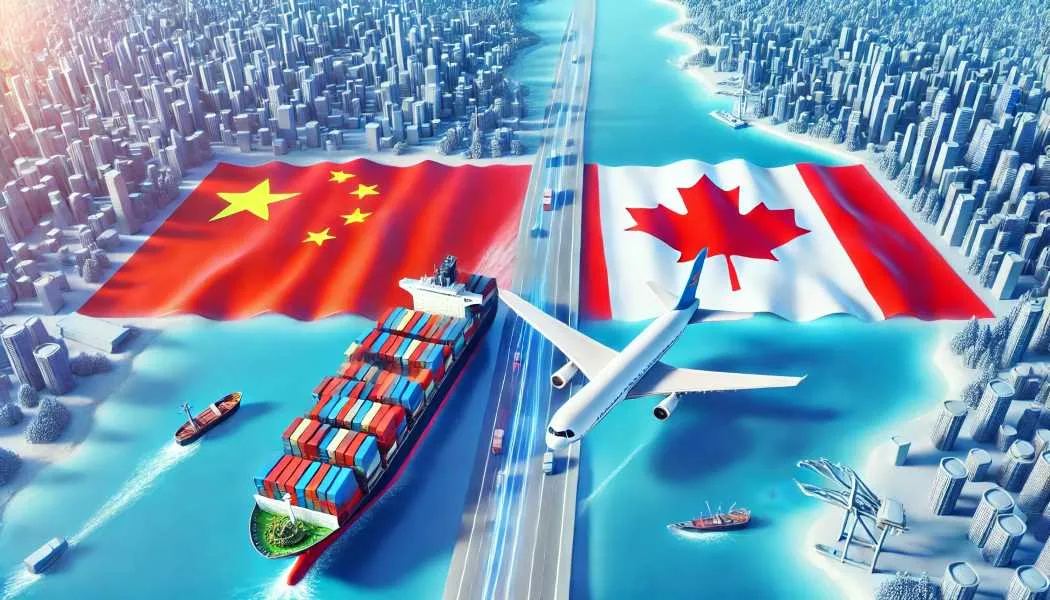Importing from China to Canada is one of the most common supply chain routes today—but for many businesses, it’s also one of the most confusing. Costs vary from one shipment to another, transit times can stretch unexpectedly, and customs clearance often feels like a black box. Whether you’re an e-commerce seller importing small parcels or a manufacturer moving full containers, you’ve likely faced the same worries: How much will this really cost me? How long will it take? What’s the best way to ship without headaches?
This article aims to provide clear, actionable answers. Drawing from industry experience, we’ll cover the real cost breakdown, transit times, and the best methods for shipping from China to Canada—plus a practical case study to illustrate how the process works in real life.
Understanding the Shipping Costs
Shipping isn’t just about the price of the container or air freight ticket. Many businesses underestimate the add-on expenses that surface along the way. If you’re considering China to Canada shipments, here are the main cost components you should budget for:
Freight Charges – The base rate you pay for sea, air, or express. For large shipments, a Full Container Load (FCL) offers the best unit cost, while Less-than-Container Load (LCL) is more flexible but less efficient.
Customs Duties & Taxes – Canada applies import duties and GST/HST based on HS codes. For example, electronics may attract minimal duty, while textiles or footwear can carry higher rates.
Port & Handling Fees – Both origin and destination ports charge handling fees, container storage, and terminal usage fees. These can add hundreds of dollars per shipment.
Last-Mile Delivery – From Canadian ports (Vancouver, Toronto, Montreal) to your warehouse or distribution hub. Costs rise for inland destinations compared to coastal delivery points.
Insurance & Documentation – Cargo insurance is optional but strongly recommended. Documentation fees (bill of lading, customs paperwork) are standard.
Tip: Always ask your forwarder for a landed cost estimate, including freight, customs, and final delivery. This avoids budget shocks and helps compare options fairly.
Transit Time: How Long Will It Take?
Cost alone doesn’t tell the full story—speed and predictability matter just as much. Partnering with an experienced International Logistics company allows you to evaluate methods realistically and avoid delays caused by poor planning. If you’re comparing providers, you can also Check their track record, service coverage, and ability to handle customs smoothly. Typical transit times include:
- Sea Freight (FCL): 30–40 days door-to-door, depending on port of entry (Vancouver is fastest; Toronto and Montreal take longer).
- Sea Freight (LCL): 35–45 days, since consolidation and deconsolidation add extra time.
- Air Freight: 7–12 days, suitable for urgent or high-value cargo.
- Express / Courier: 3–7 days, best for samples or small urgent orders, but expensive.
- DDP (Delivered Duty Paid): 25–35 days, where your logistics partner manages everything including customs and taxes—ideal for smaller businesses.
Tip: Don’t be misled by “port-to-port” estimates. Always confirm door-to-door times, which reflect the real schedule your customers care about.
Best Shipping Methods & How to Choose
Different businesses need different approaches. There’s no single “best” way, but there is a best fit for your cargo, budget, and timing.
- Sea Freight – Best for bulk cargo, heavy goods, or non-urgent orders. FCL offers the lowest per-unit cost if you can fill a container. LCL works for smaller shipments but is slower.
- Air Freight – Best for time-sensitive deliveries, high-value products, or smaller shipments that cannot wait.
- Express Services – Ideal for urgent samples or small packages. Too costly for bulk imports.
- DDP (Delivered Duty Paid) – A turnkey solution where the freight forwarder handles customs clearance, duties, and last-mile delivery. Very popular among Amazon FBA sellers and small e-commerce companies.
Decision Framework:
- If cost is your priority → Sea Freight (FCL if volume allows).
- If speed is your priority → Air Freight.
- If simplicity is your priority → DDP.
Practical Case Study: A Mid-Sized Importer
To make this more tangible, let’s consider an example:
A Canadian home goods retailer imports 10,000 kitchenware sets from Shenzhen to Vancouver. Here’s how their shipment looks in practice:
- Method Chosen: FCL sea freight, 1×40HQ container.
- Freight Cost: USD $4,200.
- Port & Handling Fees: USD $450 (China) + CAD $380 (Canada).
- Duties & Taxes: 8% duty + 5% GST = CAD $3,500.
- Last-Mile Delivery: CAD $1,100 from Vancouver port to warehouse.
- Transit Time: 34 days door-to-door.
By choosing FCL, the retailer saved about 20% compared to LCL shipping. Their logistics partner also pre-cleared customs, which cut potential delays. This example shows how method choice directly affects both cost and reliability.
Common Pitfalls Importers Should Avoid
Even experienced importers make avoidable mistakes. Watch out for:
- Ignoring Incoterms – Know whether your contract is FOB, CIF, or DDP. It defines who pays for what.
- Underestimating Customs Rules – Canada has strict rules for textiles, electronics, and food items. Incorrect HS codes can cause penalties.
- Chasing the Cheapest Quote – The lowest freight price often hides extra handling charges.
- Not Insuring Cargo – Damage or loss during transit is more common than many expect. Insurance is cheap protection.
Pro Tip: Build a checklist before confirming any shipment—cost, time, customs, insurance, delivery. If something is unclear, ask before shipping.
Conclusion & Action Tips
Shipping goods from China to Canada can feel complex, but with the right knowledge, it becomes a predictable and manageable process. To recap:
- Costs include not just freight but also duties, port fees, and last-mile delivery.
- Transit times vary widely—be sure you’re comparing door-to-door schedules.
- Best methods depend on your priorities: sea for cost savings, air for speed, DDP for simplicity.
- Case studies prove that planning and method choice save both time and money.
If you’re preparing your next shipment, here are three actionable steps:
- Request a landed cost estimate from your logistics partner before confirming.
- Compare at least two shipping methods (e.g., FCL vs. Air) to see trade-offs clearly.
- Work with an experienced forwarder who understands Canadian customs and can guide you through the process.
A trusted logistics partner ensures you don’t just ship cargo—you protect your business’s time, money, and customer trust.
Read More: Antennino: Complete Guide to Features, Benefits & Future Innovations












